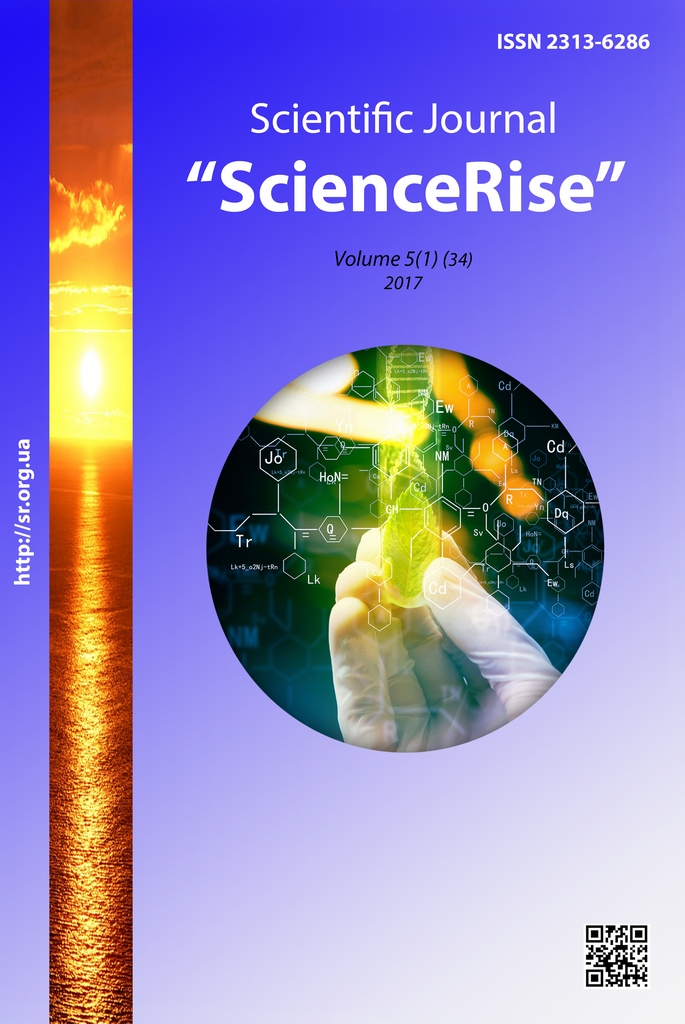The development of new buns for sandwiches fortified of vitaminizing natural carotene-containing herbal nanoadditives
DOI:
https://doi.org/10.15587/2313-8416.2017.102154Keywords:
health-improving buns, natural carotene-containing herbal nanoadditives, В-carotene, vitaminizing, bun, carrot, pumpkinAbstract
The new types of buns for sandwiches fortified by vitaminizing natural carotene-containing herbal nanoadditives with a record content of b-carotene and other BAS are developed for enterprises of restaurant industry and catering enterprises which can be used in health-giving nutrition. It is shown that the developed buns contain a high quantity of natural b-carotene (5,5…6,0 mg per 100 g), which covers the daily need of human organism
References
FAO/WHO/UNU. Globalnaya strategiya po pitaniyu, fizicheskoj aktivnosti i zdorovyu (2004). RezolyuciyaWHA.55.23 prinyata sessiej Vsemirnoi assamblei zdravoohraneniya (VAZ), World Health Organization, Zheneva. Available at: http://apps.who.int/gb/ebwha/pdf_files/WHA57/A57_R17-ru.pdf?ua=1
FAO/WHO/UNU. Dietary protein quality evalution in human nutrition. Report of an FAO Expert Consultation (2013). Food and agriculture organization of the united nations Rome, 92. Available at: http://www.fao.org/ag/humannutrition/35978-02317b979a686a57aa4593304ffc17f06.pdf
Pavliuk, R. Yu., Pogars’ka, V. V., Radchenko, L. О., Pavliuk, V. А., Tauber, R. D., Tmofeyeva, N. М. et. al. (2017). New dimension of deep recycling of raw food materials. Kharkiv: Fact, 380.
Pogarskaya, V. V., Pavlyuk, R. Yu. et. al. (2013). Aktivatsiya gidrofilnyih svoystv karotinoidov rastitelnogo syirya. Kharkiv: Finart, 345.
Pavlyuk, R., Pogarska, V., Radchenko, L., Tauber, R. D., Timofeyeva, N. (2016). Deep processing of carotene-containing vegetables and obtaining nanofood with the use of equipment of new generation. Eastern-European Journal of Enterprise Technologies, 4 (11 (82)), 36–42. doi: 10.15587/1729-4061.2016.76232
Pavlyuk, R., Pogarska, V., Timofeyeva, N., Bilenko, L., Stukonozhenko, T. (2016). Exploring the processes of cryomechanodestruction and mechanochemistry when devising nano-technologies for the frozen carotenoid plant supplements. Eastern-European Journal of Enterprise Technologies, 6 (11 (84)), 39–46. doi: 10.15587/1729-4061.2016.86968
Rakhimberdieva, M. G., Stadnichuk, I. N., Elanskaya, I. V., Karapetyan, N. V. (2004). Carotenoid-induced quenching of the phycobilisome fluorescence in photosystem II-deficient mutant ofSynechocystissp. FEBS Letters, 574 (1-3), 85–88. doi: 10.1016/j.febslet.2004.07.087
Goni, I., Serrano, J., Saura-Calixto, F. (2006). Bioaccessibility of β-Carotene, Lutein, and Lycopene from Fruits and Vegetables. Journal of Agricultural and Food Chemistry, 54 (15), 5382–5387. doi: 10.1021/jf0609835
Dherani, M., Murthy, G. V. S., Gupta, S. K., Young, I. S., Maraini, G., Camparini, M. et. al. (2008). Blood Levels of Vitamin C, Carotenoids and Retinol Are Inversely Associated with Cataract in a North Indian Population. Investigative Opthalmology & Visual Science, 49 (8), 3328–3335. doi: 10.1167/iovs.07-1202
Oberbayl, K., Livshits, I. (1996). Vitaminyi tseliteli. Sputniki nashogo zdorovya. Minsk: Paradoks, 448.
Shatnyuk, L. N. (2000). Nauchnye osnovy novyh tekhnologij dieticheskih produktov s ispolzovaniem vitaminov i mineralnyh veshchestv. Moscow, 60.
Kaprel'yants, L. V., Iorhachova, K. H. (2003). Funktsional'ni produkty. Odessa: Druk, 312.
Tutelyan, V. A. Pitanie i zdorove (2004). Pishchevaya promyshlennost, 5, 6–7.
Downloads
Published
Issue
Section
License
Copyright (c) 2017 Raisa Pavlyuk, Viktoriya Pogarska, Leonida Bilenko, Olga Yurieva, Anna Gasanova, Nadiya Maximova

This work is licensed under a Creative Commons Attribution 4.0 International License.
Our journal abides by the Creative Commons CC BY copyright rights and permissions for open access journals.
Authors, who are published in this journal, agree to the following conditions:
1. The authors reserve the right to authorship of the work and pass the first publication right of this work to the journal under the terms of a Creative Commons CC BY, which allows others to freely distribute the published research with the obligatory reference to the authors of the original work and the first publication of the work in this journal.
2. The authors have the right to conclude separate supplement agreements that relate to non-exclusive work distribution in the form in which it has been published by the journal (for example, to upload the work to the online storage of the journal or publish it as part of a monograph), provided that the reference to the first publication of the work in this journal is included.

